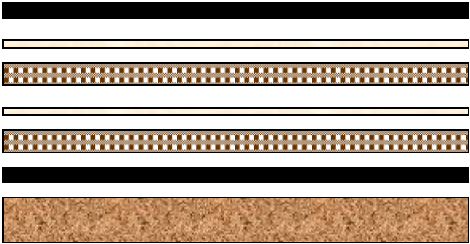1., The definition of PCB HF board
High Frequency Board refers to the special electromagnetic frequency circuit board, used in high frequency (greater than 300 MHZ frequency or wavelength is less than 1 meter) and microwave (greater than 3 GHZ frequency or wavelength is less than 0.1 meters) in the field of PCB, is on the microwave base copper clad using common rigid circuit board manufacturing method of a part of the process or the use of special processing methods and the production of circuit boards. In general, high frequency board can be defined as a frequency above 1GHz circuit board.
With the rapid development of science and technology, more and more equipment is designed in the microwave frequency band (> 1GHz) or even with the millimeter wave field (30GHz) above the application, which also means that the frequency is getting higher and higher, the requirements for the substrate of the circuit board are also getting higher and higher. For example, the substrate material needs to have excellent electrical properties, good chemical stability, with the increase of power signal frequency in the substrate loss requirements are very small, so the importance of high frequency plate is highlighted.
2, PCB high frequency board application field
2.1 Mobile communication products, intelligent lighting system
2.2 Power amplifier, low noise amplifier, etc
2.3 Passive devices such as power splitters, couplers, duplexes, filters, etc
2.4 In the field of automobile anti-collision system, satellite system, radio system and so on, the development trend of electronic equipment is high frequency.
3, The classification of High Frequency Board
3.1 Thermosetting materials filled with powdered ceramics
A. Manufacturer:
Rogers 4350B/4003C
25N/25FR from Arlon
Taconic's TLG series
B. Processing method:
The process is similar to that of epoxy resin/glass woven cloth (FR4), but the plate is brittle and easy to break. The life of the drill bit and gong knife should be reduced by 20% when drilling and gong plate.
3.2 PTFE (polytetrafluoroethylene)
A: The manufacturer
1 RO3000series, RT series and TMM series of Rogers Company
2 Arlon's AD/AR series, Isoclad series, and Cuclad series
3 Taconic's RF series, TLX series and TLY series
4 Taixing Microwave F4B, F4BM, F4BK, TP-2
B: The processing method
1. Opening: Protective film must be retained to prevent scratches and indentation
2. The drill:
2.1 Use a new drill tip (standard 130), the best is one in a stack, the presser foot pressure is 40psi
2.2 Aluminum sheet as the cover plate, and then use 1mm melamine pad, tighten the PTFE plate
2.3 After drilling, use air gun to blow out the dust in the hole
2.4 Use the most stable drill and drilling parameters (basically, the smaller the hole is, the faster the drilling rate is; the smaller the Chip load is, the smaller the return rate is)
3. The hole processing
Plasma treatment or sodium naphthalene activation treatment is beneficial to metallization of pores
4. PTH sink copper
4.1 After micro-etching (the micro-etching rate is controlled by 20 micro-inches), the plate shall be fed from the de-oil cylinder in PTH
4.2 If necessary, the second PTH will be performed and only need to start from the anticipated margaritops jar
5. The resistance welding
5.1 Pre-treatment: Acid washing plate is used instead of mechanical grinding plate
5.2 Pre-treatment and then baking plate (90 degree Celsius, 30min), brush green oil to cure
5.3 The baking plate is divided into three sections: one section is 80 degree Celsius, 100 degree Celsius and 150 degree Celsius, and the time is 30min for each section (if there is oil spilling on the substrate surface, you can rework it: wash the green oil off and reactivate it)
6. Gong board
The white paper is laid on the PTFE board circuit surface, and the top and bottom are clamped with FR-4 substrate or phenolic substrate with 1.0mm thickness etched to remove copper: as shown in the figure:

After the edge of the gongs need to be carefully repaired and scraped by hand, strictly prevent damage to the substrate and copper surface, and then use a considerable size of sulfur free paper separation, and visual detection, to reduce burr, the key is the process of the gong plate to the effect of good.
4., Process Flow
1.NPTH PTFE plate processing process
Material opening - drilling - dry film - inspection - etching - etch - solder resistance - character - tin spray - molding - test - final inspection - packing - shipment
2.PTH PTFE plate processing process
Material opening - drilling - hole treatment (plasma treatment or sodium nthalene activation treatment) - copper precipitation - plate electricity - dry film - inspection - drawing electricity - etching - corrosion inspection - solder resistance - character - tin spray - molding - test - final inspection - packing - shipment
5., Summary
Difficulties in high frequency PCB plate processing
1. Copper sink: the hole wall is not easy to copper
2. Switching, etching, line width line notch, sand hole control
3. Green oil process: control the adhesion and foaming of green oil
4. Strictly control the scratch of the board in each process, etc